Sank with the loss of two lives and the third was sunk, although it is not known when and how. But all this unfolded after at least three of the charges had been laid. Although held captive on the ship itself, the seamen
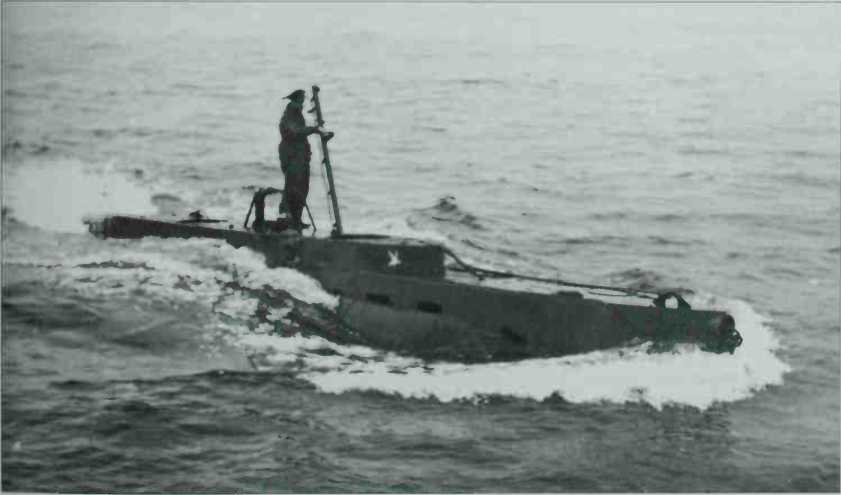
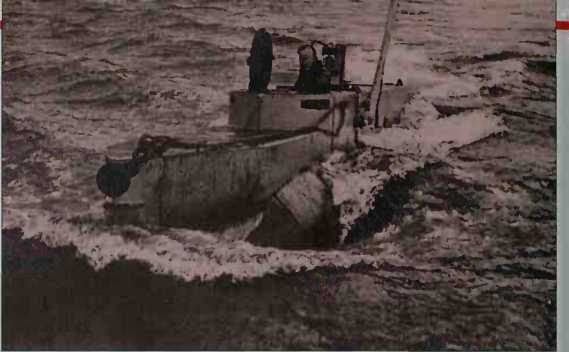
Right: X-craft crew got fresh air whenever they could to relieve the closet-style condition of their vessel.
Who surrendered refused to reveal the whereabouts of the explosives. Finally, the Germans got their answer when the mighty Tirpitz was lifted five feet out of the water. It would take seven months to complete repairs. Both surviving submarine commanders, Lieutenants Donald Cameron and Godfrey Place, were rewarded after the war with the VC.
Liitzow abandoned the hunt for the Arctic convoys soon afterwards, returning to occupied Poland for operations in the Baltic. That left the last remaining danger - Scharnhorst - in Norwegian waters, fully equipped and ready for action. It was only a matter of time before she would venture forth to take on a convoy and this troubled the British commanders whose job it was to protect the merchant ships.
On Christmas Day 1943 the order to sail finally came for the expectant Scharnhorst crew, eager as they were to salvage the good name of the to the Allies, it had no idea it was heading towards some of the Royal Navy’s big cruisers in the region.
First to fire on the German was HMS Belfast who picked up the enemy by radar. Norfolk then joined the battle by opening fire and scoring a hit. The British ships broke off their action, not wanting to scare Scharnhorst back into port.
Next to spy it was Sheffield some two hours later. In the spat that
Followed it was Norfolk’s turn to sustain damage. Yet the British cruisers did a brilliant job. They drove the unsuspecting Scharnhorst into the arms of Admiral Fraser on the Duke of York. At a range of 1,200 yards, the Duke of York opened fire with its devastating 14-inch guns. This time Scharnhorst fled to the east, making good ground against its pursuers. But critical damage forced the German ship to steady its speed. It gave
Scharnhorst had no idea it was heading towards the Royai Navy’s big cruisers
German navy. The ship emerged from its protective fjord in the company of five destroyers that evening in search of convoy JW55B.
Poor weather once again played its part, this time to the advantage of the Allies. Scharnhorst hived away from its destroyer escorts. Lacking the superior intelligence assistance open
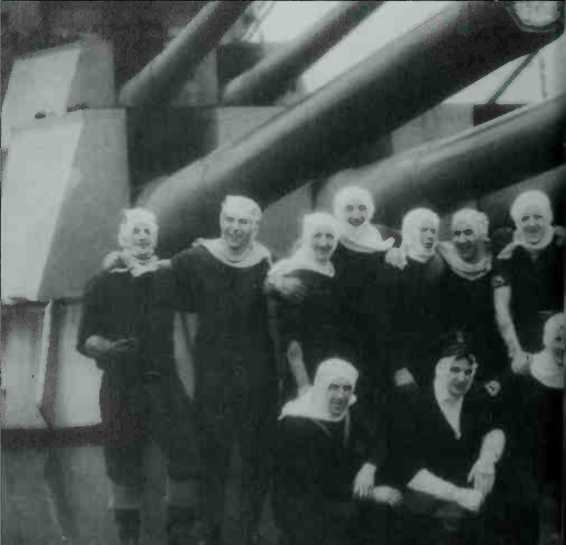
British destroyers ample oppttrtunity to unleash some torpedoes, finally sinking the Scharnhorst at 7.45pm. Just 36 survivors were saved from a crew of 2,000.
Tirpitz was now the lone operator in the Arctic. Although it rarely saw action, its presence alone was sufficient cause to divert air and naval craft from other duties. It would not be allowed to escape unscathed for long. Nevertheless, it was to be aircraft that delivered the deathblows to this massive battlewagon.
The first sortie against it began from Scapa Flow on 30 March 1944 with the Duke of York, Belfast, Anson and the aircraft carrier Victorious in ‘Operation Tungsten’. On 3 April, 42 Barracuda aircraft loaded with powerful, armour-piercing bombs set off after their quarry, which was at that moment in Norway’s Altenfjord, preparing to go to sea.
LEND-LEASE
Still hoping to keep his country out o( war. President Roosevelt steered the Lend-Lease Act through Congress in March 1941. It gave the President powers to send military and material aid to countries at war with Germany and Italy with the sote provision being that they repay the loans at the end of the war. Although it was opposed fiercely by some factions, the Act had the beneficial effect of boosting the American defence industry even before the country went to war with Japan.
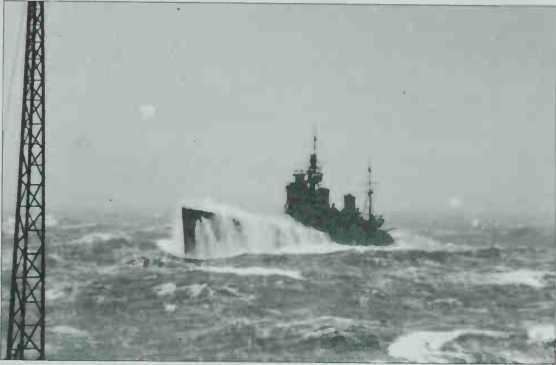
Above: Wintry seas kept British sailors perpetually wet. Left: Proud gunners on HMS Duke of York posed for the camera In front of their guns after sinking the German battlecruiser Scharnhorst.
The action devastated the upper decks of Tirpitz and killed 122 men. Yet the supership stayed afloat, to the disappointment of the Allies.
Several other bids to sink the ship by Fleet Air Arm aircraft were thwarted by poor weather while still more failed to deliver the necessary punch to put it out of action. Aircraft were being lost in these vain attempts, forcing the Admiralty to think again. They called in the assistance of Bomber Command which had vast ‘Tallboy’ bombs.
Taking off from a Russian base on 15 September 1944, a cloud of Lancaster bombers rained 16 such bombs on the Tirpitz, causing extensive damage. This time it would take nine months to make the repairs.
If the crippled Tirpitz had not moved to Tromso that October, the Allies might have been satisfied. Germany wanted it as a floating gun platform to defend an expected invasion in the region by the Allies. 5’et the Admiralty was disturbed by the ship’s sudden activity and feared new attacks at sea.
On 29 October, 32 l. ancaster bombers in ‘Operation Obviate’ caused more devastation. However it wasn’t until ‘Operation Catechism’ got underway involving the men and l. ancaster aircraft of 61" Squadron -‘the Dambusters’ - on 12 November 1944 that Tirpitz finally rolled over and died. About 1,000 crewmen were lost, trapped inside the great ship as it turned turtle.
CORAL SEA AND MIDWAY
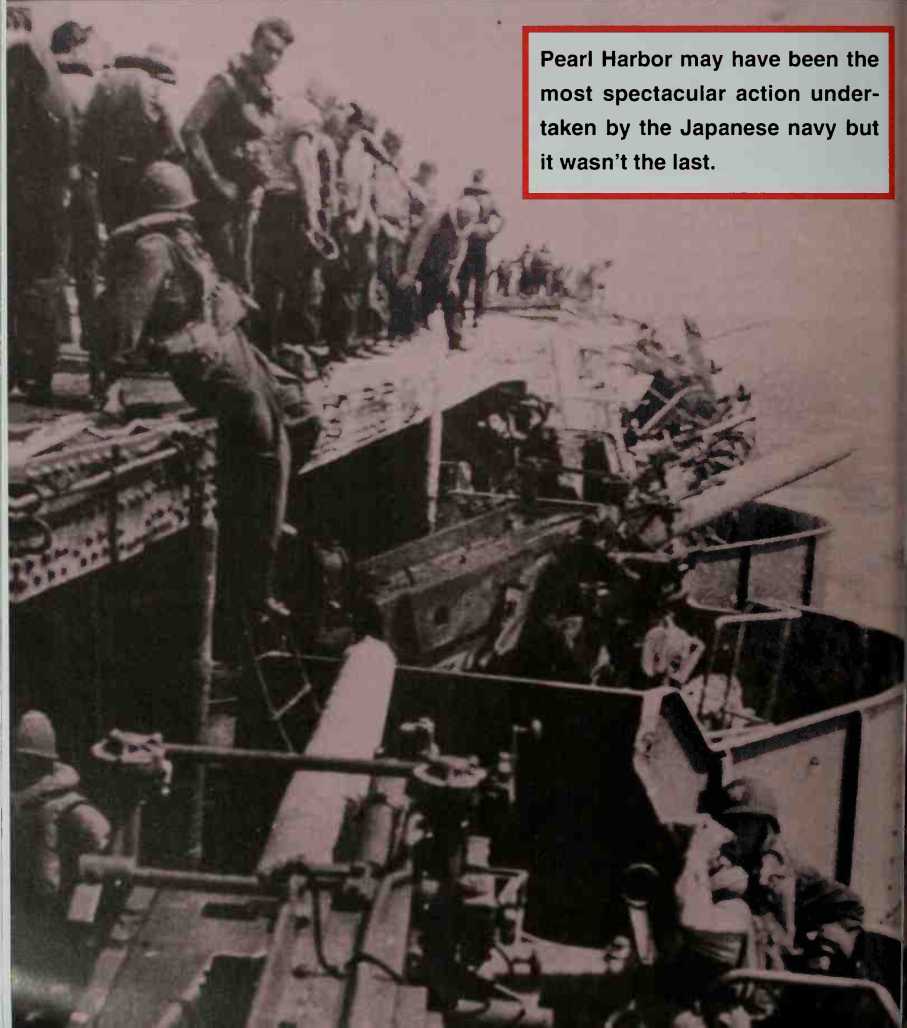
Left: Crews from USS Lexington go into action in the Coral Sea in May 1942. Below: Carrying the wounded off USS Marblehead in Netherlands East docks after the Battle of Java in February 1942.
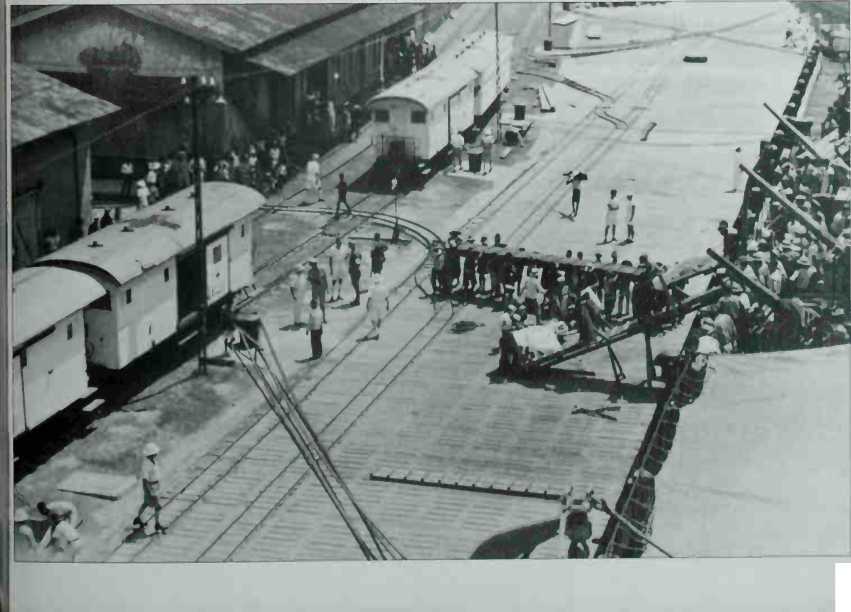
Here was the world’s third most powerful navy staffed by efficient, skilled commanders and loyal sailors. It was their brief to roam the seas around Japan’s newly acquired territories, protecting land-based flanks by fending off attacks from air and sea.
The Japanese navy played a major role in the domino fall of Asian and Pacific lands and islands, including that of Thailand, Hong Kong, the Philippines and Burma. Indeed, the noose put around Singapore by the Japanese navy during February 1942 ensured that none of the defending British or Australian troops could escape by sea and all those who survived the fighting were consequently taken prisoner.
When the Japanese cast their eyes in the direction of Java, the jewel they wanted in their crown, an allied naval force squared up to the challenge. Under Dutch officer Admiral Karel Doorman, a fleet of heavy and light cruisers and destroyers gathered from the Dutch, American, British and Australian navies determined to keep the Japanese out of the oil-rich ctilony.
The Battle of the Java Sea began on 27 February and was one of the largest naval confrontations the world had seen since World War I.
Both sides seemed equally matched when they began a mutual bombardment with guns. But the Japanese wreaked havoc when they edged closer to the Allied fleet and opened up with torpedoes.
Hostilities ceased while the Allied ships refuelled only to resume within hours beneath the moonlight. Doorman was delighted when he once again encountered the Japanese and sought to end their plans to invade Java once and for all. Little did he realise that he was being snapped up in a tactical pincer. When




 World History
World History









